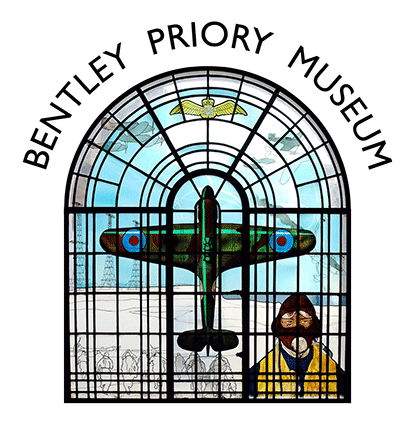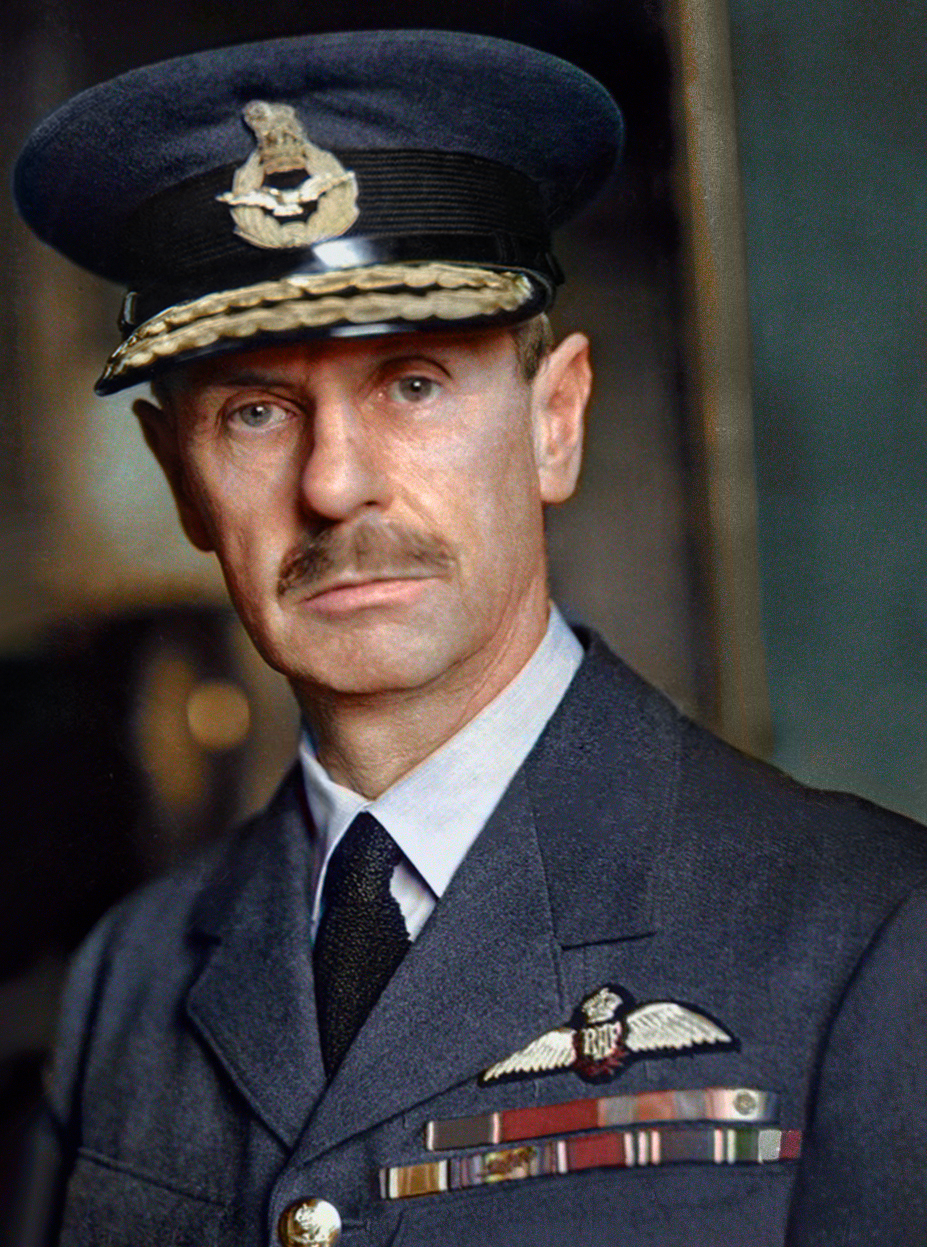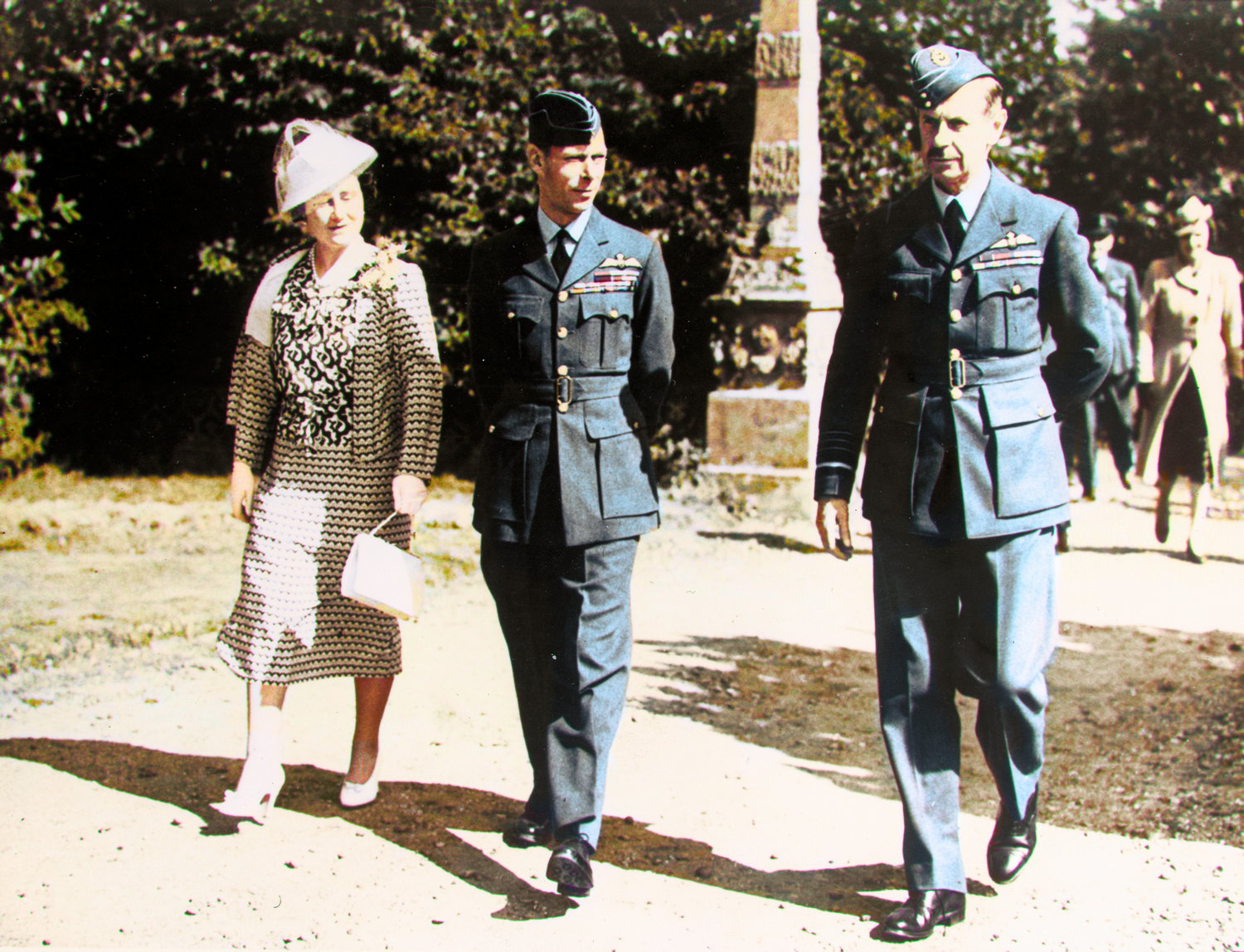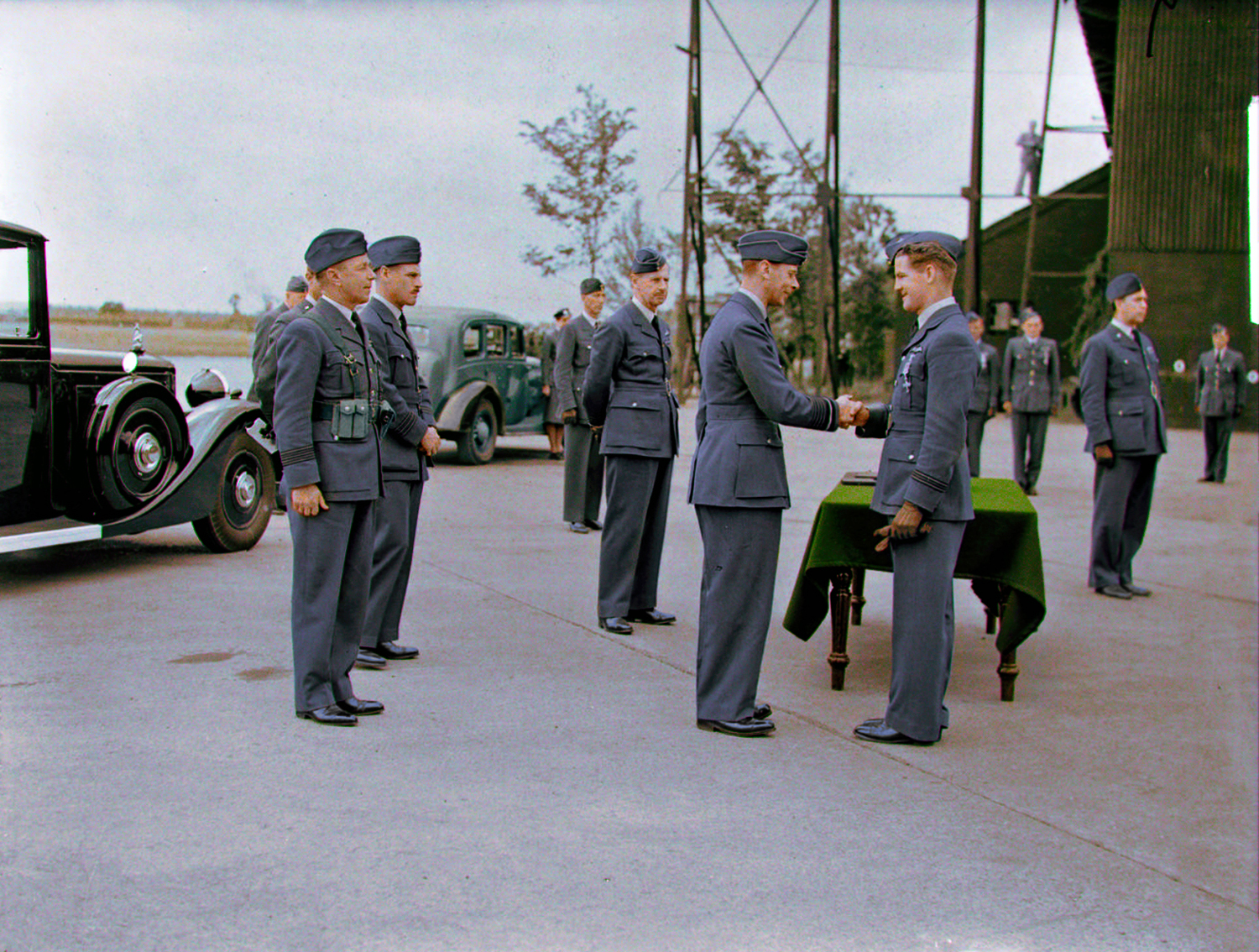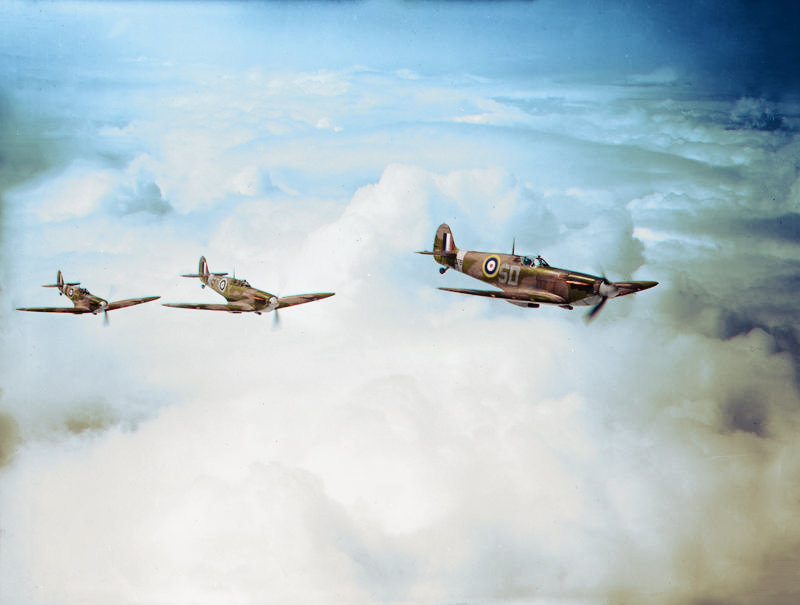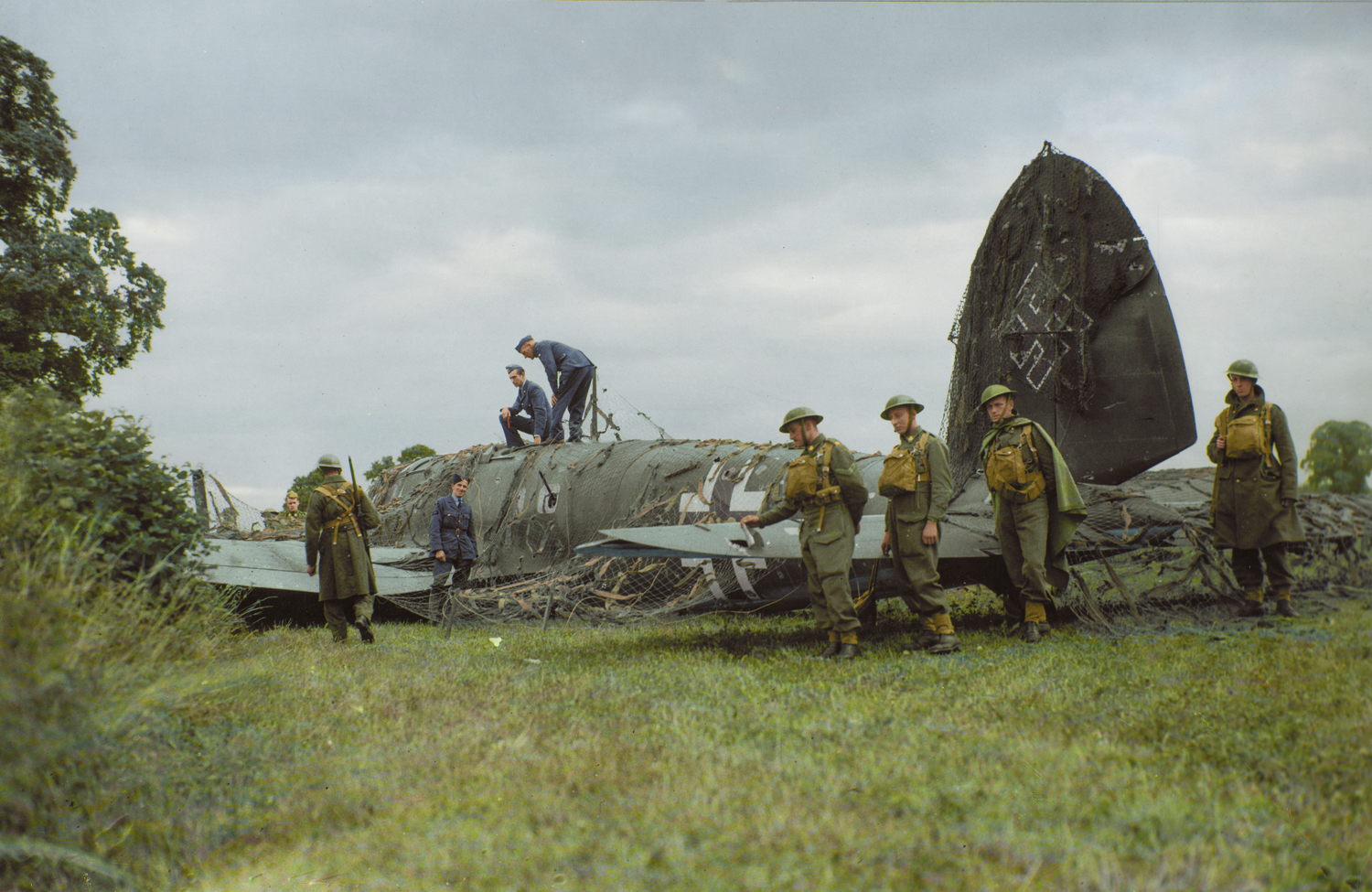Iconic photographs of the Battle of Britain (10th July 1940 – 31st October 1940) brought to life in colour by the artists Richard James Molloy and Doug Banks. Read more about our colourists here
Air Chief Marshal Sir Hugh Dowding was appointed the first Commander-in-Chief of Fighter Command at RAF Bentley Priory in 1936. He developed the world’s first integrated system of air defence; this innovative system of communications became known as The Dowding System.
King George VI and Queen Elizabeth visited RAF Bentley Priory, in September 1940, during the height of the Battle of Britain, when some of the most intense aerial combat was taking place. Queen Elizabeth and King George VI are seen here walking with Air Chief Marshal Sir Hugh Dowding in the gardens at RAF Bentley Priory towards the Mansion House.
King George VI presents Flight Lieutenant Alan C. Deere with the Distinguished Flying Cross (DFC) at a ceremony in Hornchurch on 27 June 1940. To the King’s left stands Air Chief Marshal Sir Hugh Dowding, Commander-in-Chief, Fighter Command. In September 1940, Deere was awarded a bar to the DFC.
501 Squadron was one of the most heavily engaged units in RAF Fighter Command and won seven battle honours flying Spitfire, Hurricane and Tempest fighter aircraft during WW2. The squadron saw extensive action during the Battle of Britain, with 19 pilots killed, more than any other squadron.
This He 111 of Kampfgeschwader 55 ‘Greif’ was shot down by Hurricanes of 43 Squadron. Oblt Kleinhans was killed and the other four aircrew were taken as POW (Prisoners of War). KG55 was one of the longest serving and best known bomber units in the Luftwaffe during WW2. The wing operated the Heinkel He 111 exclusively until 1943.

Sponsored by theintergroup
 What’s On
What’s On Opening Hours & Admission
Opening Hours & Admission